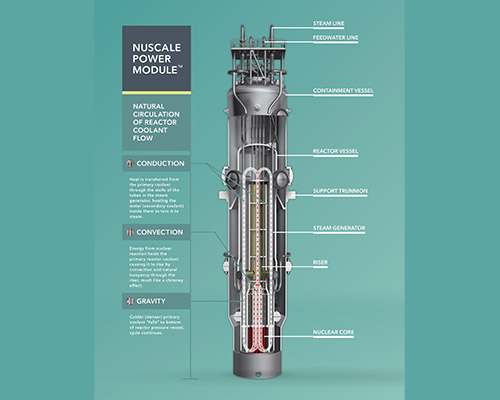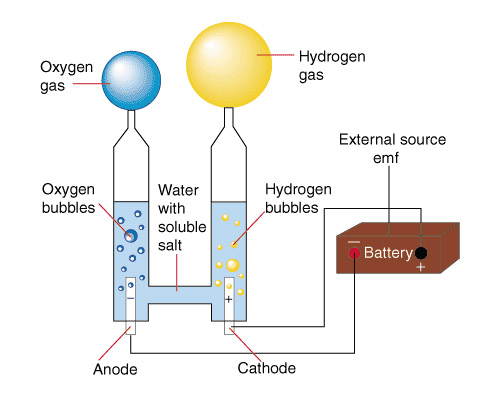Our mission of revolutionizing how we generate energy and produce resources starts with revolutionizing how we build and deploy power plants. Today, most every power plant in our society is made to order - custom-designed and custom-built as unique facilities. This arbitrary approach drastically increases both their time and cost of construction, all the more so since they are made with non-standardized parts and are powered by non-standardized fuels. Just as importantly: they rarely take advantage of their ability to power additional systems as a byproduct of standard operation. Instead, between 50-67% of all energy power plants generate is today written off as "waste" heat.
This is a squandered opportunity on a massive scale.
Designed Cogeneration is a core function of Scarcity Zero that seeks to avoid these shortcomings by designing power and resource systems to work as cooperatively as possible. With an end goal of transforming both into modules that can be rapidly deployed on-demand, the framework's approach is based on the following mindset:
- Power-generating and resource-producing systems should be designed and mass-produced as identical models. This drastically reduces both the cost, time and waste of their construction, while correspondingly reducing their complexity and difficulty of maintenance.
- Power-generating and resource-producing systems should be designed to connect modularly with each other through standardized methods that are both long-term upgradable and indefinitely scalable. This allows them to be deployed (and expanded) rapidly.
- Power-generating and resource-producing systems should be designed to leverage waste heat from other systems as a primary energy source. This practice, known commonly as "cogeneration" or "Combined Heat and Power (CHP)" can dramatically boost overall efficiency and performance.
This approach establishes an operational capacity that is far more powerful than the sum of its individual parts.
- Because power and resource systems can be designed virtually and mass-manufactured on assembly lines with cutting-edge methods and cutting-edge materials, they can be built in a matter of weeks to months - not years to decades.
- Because power and resource systems can be designed to interface modularly with each other and connect via standardized means, it becomes straightforward to rapidly expand generating capacity. Multiplying aggregate power output isn’t a question of engineering constraints, then - it's a question of how long it would take to deliver power modules, connect them together and turn them on. The answer is thus days - if not hours.
- Because power and resource systems can be designed to leverage the waste energy of one system to power the functions of another, any increase in power generation can accordingly deliver a proportional increase in resource production - especially fresh water and hydrogen fuel.
As an operational framework, Designed Cogeneration is a combination of four technologies: next-generation nuclear, high-temperature seawater desalination, hydrogen production through electrolysis and air scrubbing systems that extract greenhouse gasses from Earth's atmosphere to mitigate the causes of climate change. Here's how it fits together:
Next-Generation Nuclear
Designed Cogeneration first employs latest-generation nuclear reactor designs because they are by far and away the safest, cleanest and most powerful sources of energy in the world. Often leveraging high-temperature liquid reactants and non-enriched, highly sustainable fuel supplies, these reactor designs completely avoid the cost and safety concerns with past approaches to nuclear power, and enable reactors to be both small and modular for mass-production. Depending on the design and fuel cycle, concerns of both waste and proliferation risk can also be significantly reduced.
It is vital to emphasize that the Soviet-era reactor designs that struck fear in the hearts of millions through Chernobyl-like meltdowns have as much in common with modern reactor designs as The Hindenburg does with commercial jetliners. However well-intentioned, unfounded fears of atomic energy as a concept have pushed society to rely on inferior power sources that are not only less reliable, less safe and less clean, but also make it harder to scale our power infrastructure to meet tomorrow’s challenges.
By embracing modern reactor designs – especially non-pressurized liquid reactors fueled by thorium (LFTR) – we not only have a highly potent source of power generation on a small footprint to complement Integrated Renewables, we also have the ability to power dedicated resource production through waste energy. These reactors (especially if deployed as modules) can also power carbon scrubbers in the same building envelope.
Seawater Desalination
As nuclear reactors operate at high temperature, they offer an abundance of residual heat energy that can be used to desalinate seawater into fresh water. Currently, the cleanest way to perform this process is Multi-Stage Flash Distillation (MSFD), which simply pumps seawater through a system set at varied temperatures and pressures. As the boiling point of water is directly relational to those elements, this system rapidly "flash" turns seawater into steam which is then collected and condensed into fresh water.
While Multi-Stage Flash Distillation is the most common form of seawater desalination today, it carries intense energy requirements that come with high operational costs. Yet by integrating desalination within high-temperature reactors, the non-radioactive heat exchangers can be used to counterflow with seawater intake to preheat it to boiling before it even reaches the desalination facility. This means that not only we can deploy desalination on a nationwide scale simply as a byproduct of power generation, we can do with little if not negligible overhead.
Hydrogen Production
A sustainable abundance of residual heat energy from high-temperature reactors also affords us straightforward avenues for producing hydrogen by way of electrolysis. Electrolysis is a process that introduces an electrolyte and an electric current strong enough to break molecular bonds of water, chemically separating it into oxygen and hydrogen gas. Like Multi-Stage Flash Distillation, it’s not a new concept. Electrolysis has been in use since the 1700s to extract various substances, hydrogen among them. But as its utility is constrained by energy costs, this framework can slash the logistical and financial obstacles to adoption over a larger scale.
This would enable hydrogen to become a viable, carbon-neutral alternative to fossil fuels that can complement electric vehicles in parallel. While batteries may prove more effective for smaller personal vehicles and transport trucks (all the more so if they can be charged wirelessly), hydrogen can stand in where batteries are less useful: commercial jetliners, transoceanic container ships and other industrial machinery that needs to be deployed off-grid. If paired further with atmospheric carbon capture systems, an abundant supply of hydrogen also provides a sustainable means to synthesize hydrocarbons that can be used for specialized fuels and the building blocks for next-generation synthetic materials.
Atmospheric Carbon Capture
Upgrading our power and resource infrastructure to become carbon-neutral is an essential step to building a clean energy future. Yet in order to be successful in addressing climate change, it must occur alongside efforts to reduce greenhouse emissions already present. Humanity has long-passed an initial carbon tipping point of 400 parts-per-million, and global fossil fuel usage is continuing to increase along with our population. So even as we attempt to step up efforts change course, the causes of climate change are still growing in scope.
To address this, the last systems envisioned for cooperative integration with power and resource infrastructure are atmospheric scrubbers - machines that directly extract carbon and other greenhouse gasses from the atmosphere.
Several companies today have patented methods that perform this task via either chemical or mechanical means, with current pricing models assessing a general cost of $100 per ton of CO2 captured under combined-cycle natural gas.
If powered by waste heat (either directly or via thermoelectricity), that price point drops substantially - all the more so over time as atmospheric scrubbing is an emergent market that needs to recoup research and development costs through initial product sales.
In addition to their primary role of air purification, atmospheric scrubbing systems can also employ cogenerative methods in their own right: generating electricity, producing fresh water and providing a sustainable supply of carbon that can be paired with extracted hydrogen to manufacture synthetic fuels and synthetic materials. The following images are schematics from the Direct Air Capture corporation, outside of Vancouver, BC:
Although petroleum powers roughly 90% of global transportation today, it's also vital in material science and polymer manufacturing. Products from latex, to polyester to almost all forms of plastics depend greatly on it. But petroleum is actually a loose term for fossilized "hydrocarbons" - combinations of hydrogen and carbon in a chemical chain that releases energy when combusted. Hydrocarbons also allow straightforward pathways to making solids through a process called "polymerization."
Petroleum isn't uniquely special for these applications - it just so happens to be the abundant source of hydrocarbons of our time, so it's what our civilization has thus-far used. But it doesn't have to be this way, as most any hydrocarbon can help perform this function - especially hydrocarbons that are engineered specifically for specialized applications. This includes fuels for aircraft, chemicals to make solvents, lubricants, fabrics, high-strength plastics and other synthetic materials.
By deploying atmospheric carbon scrubbing on a large scale within cogenerative systems, we're enabled to reverse the impact of climate change while also extracting sustainable supplies of both hydrogen and carbon to manufacture tomorrow's materials and tomorrow's fuels.
All in the same footprint. All powered primarily by conservation of waste energy. And all mass-produced as indefinitely scalable systems designed from the ground up to work cooperatively in a standardized and modular ecosystem.















